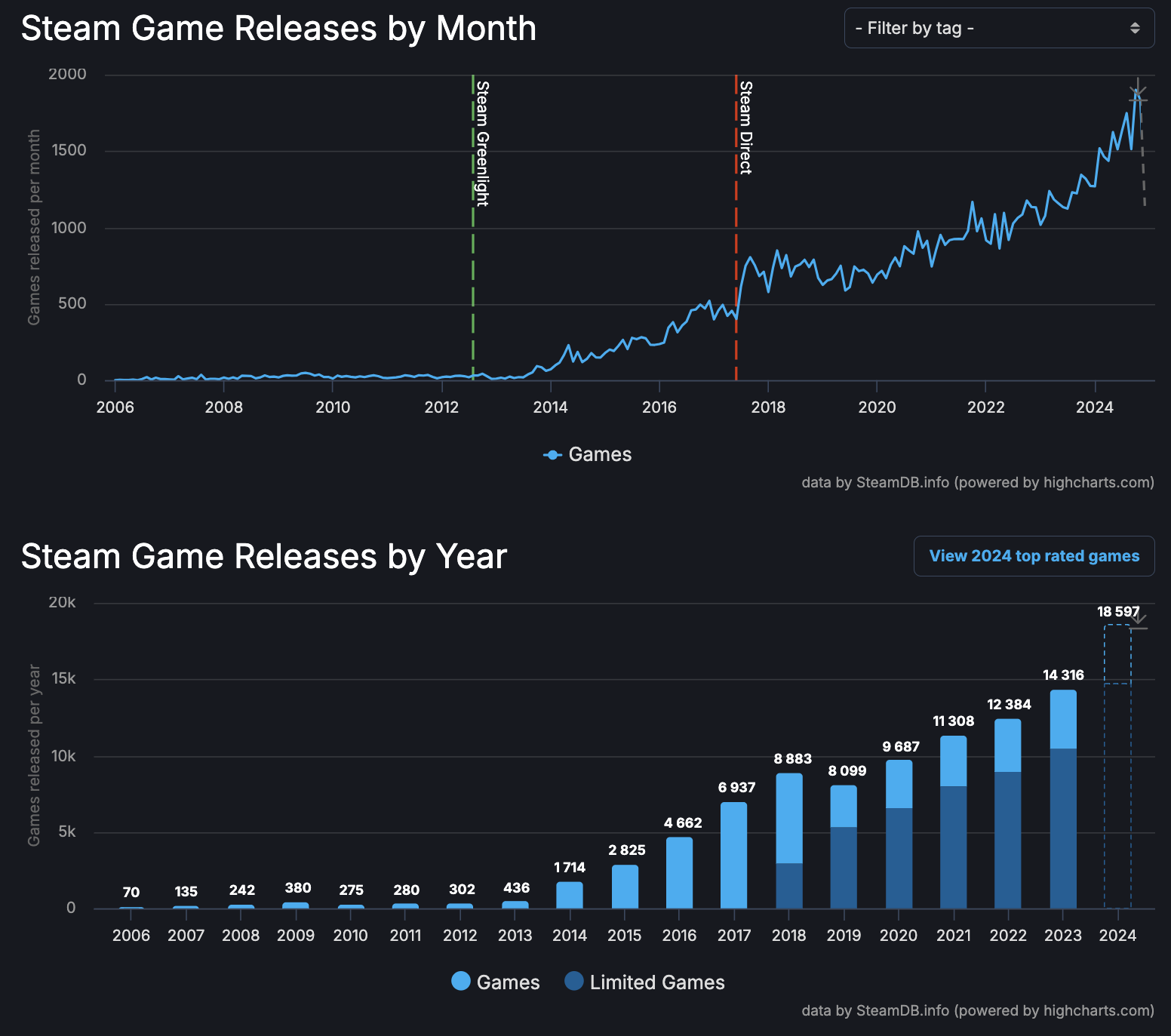The best MagSafe battery packs of 2024: Expert tested and reviewed
Since we often rely on our mobile devices to shop, communicate, travel, and more, it's paramount to keep your phone's battery boosted. But most of us can't stay tethered to a wall outlet.Thankfully, you don't have to. The battery market is packed with options that can boost your phone's battery life no matter where you are. From power banks to wireless charging stations, there's something for everyone's lifestyle and charging needs. Battery packs that use MagSafe technology to magnetically attach to your phone offer a more compact solution than traditional portable power banks, so you can ditch the charging wires altogether.What's the best MagSafe battery pack right now?I and other ZDNET experts went hands-on with several of the top MagSafe battery packs (including every pick on this list), spending time testing for charge speed, function, and other features during our everyday activities. Our tested pick for the best overall MagSafe battery pack is the newly refreshed Baseus PicoGo Magnetic power bank thanks to its practical design and refined functionality. Read on to learn more about the Baseus PicoGo and which other top-tested MagSafe battery packs may be worth considering for your wants and needs.Also: We've tested every iPhone accessory on this list. Here are the best Sort by All Value Efficiency Performance Design Compatibility The best MagSafe battery packs of 2024 Show less The Baseus PicoGo has a traditional rectangular design with rounded edges and corners, a sleek finish, and indicator lights on the bottom of the pack. It's fairly average weight for a battery, and it comes in four colors (blue, white, black, and pink). It can charge at 20W with wired charging or at 15W with wireless, magnetic charging. Plus, it can charge wirelessly and with the USB-C port simultaneously for a double device boost.When I tested this pack, it increased the battery of my iPhone 14 Pro from 25% to 60% in half an hour. About 40 minutes later, the phone was back up to 80%, with half of the battery capacity still left in the pack.Two things about this battery pack piqued my interest from the get-go when I first saw the product at an NYC launch event. First, it's priced at only $50 (even less during a sale), and its kickstand feature is upside down and all around (literally). The affixed ring on the back of this pack can be used as a kickstand in any orientation (it fully rotates) or used as a phone grip. While I've seen plenty of kickstand features before, I've never seen one like this.Current Baseus PicoGo users on Amazon said they liked the indicator lights, strong magnetic grip, and battery-boosting feature that the PicoGo pack provided, giving it a 4.4/5 star rating. Other users said they were expecting more power capacity and experienced warming on their phones. Keep in mind that most battery packs do get warm to the touch, and that is expected. It's also important to note that a 5,000mAh pack is enough for most people to have on hand for top-offs or while on the go, but it isn't large enough for repetitive recharges without the unit being charged up either. It's enough to charge most smartphone models once fully (or close to it); if you need more than that, I recommend looking at larger battery packs.Baseus PicoGo Magnetic Power Bank specs: Capacity:5,000mAh|Charging Port:USB-C |Power button:YesAuthor's note: The Baseus PicGo is currently sold out on Baseus' website at the time of publication, but it is available on Amazon in select colors. Pros 20W charging Rotatable ring Ring doubles as stand or grip Fun colors Clear indicator lights Cons Not the most comfortable to use ring as grip Bit of overhang off phone Slippery to hold The Baseus PicoGo has a traditional rectangular design with rounded edges and corners, a sleek finish, and indicator lights on the bottom of the pack. It's fairly average weight for a battery, and it comes in four colors (blue, white, black, and pink). It can charge at 20W with wired charging or at 15W with wireless, magnetic charging. Plus, it can charge wirelessly and with the USB-C port simultaneously for a double device boost.When I tested this pack, it increased the battery of my iPhone 14 Pro from 25% to 60% in half an hour. About 40 minutes later, the phone was back up to 80%, with half of the battery capacity still left in the pack.Two things about this battery pack piqued my interest from the get-go when I first saw the product at an NYC launch event. First, it's priced at only $50 (even less during a sale), and its kickstand feature is upside down and all around (literally). The affixed ring on the back of this pack can be used as a kickstand in any orientation (it fully rotates) or used as a phone grip. While I've seen plenty of kickstand features before, I've never seen one like this.Current Baseus PicoGo users on Amazon said they liked the indicator lights, strong magnetic grip, and battery-boosting feature that the PicoGo pack provided, giving it a 4.4/5 star rating. Other users said they were expecting more power capacity and experienced warming on their phones. Keep in mind that most battery packs do get warm to the touch, and that is expected. It's also important to note that a 5,000mAh pack is enough for most people to have on hand for top-offs or while on the go, but it isn't large enough for repetitive recharges without the unit being charged up either. It's enough to charge most smartphone models once fully (or close to it); if you need more than that, I recommend looking at larger battery packs.Baseus PicoGo Magnetic Power Bank specs: Capacity:5,000mAh|Charging Port:USB-C |Power button:YesAuthor's note: The Baseus PicGo is currently sold out on Baseus' website at the time of publication, but it is available on Amazon in select colors. Read More Show Expert Take Show less Show less Let me start by saying that I really liked the first iteration of this battery pack (enough to have it included on this list over the last several months), and I like the newly upgraded Qi2 version even more.This new model has the USB-C connector on the side instead of the bottom of the pack, making it easier to use your phone standing upright while the pack is charging. Instead of the charging indicator lights being on the side, they're now more visible, located on the back of the pack. This model is also a tad slimmer and lengthier than its predecessor, making it easier to transport.And while this Belkin pack is a true embodiment of a classic brick-style battery booster, there is still a place in my heart for it because it just works so well. Similarly to many picks on this list, it provides 5,000mAh of extra juice to your phone, which is a standard capacity for many MagSafe packs. Its design, though simple, fits snugly against my phone (no bumping onto the lip of my camera lens) and remains secure. Often, you'll see some gapping between the battery and the phone due to a disturbed magnetic connection, but not with this Belkin battery pack.Its secure grip and competitive battery speak for themselves. I took this pack to a Yankees game, to several late-night outings, to work, and even on errands, and I am impressed with the charging. You can expect between a 25-30% battery boost in about an hour to your phone.What's more, is that it comes with a built-in stand that easily swings in and out -- no folding required -- and while I originally thought this would be useless, I rather enjoyed being able to prop my phone up whenever. Perhaps the best thing about this Belkin pack is that it comes in a few fun colors, a nice feature many competitors still haven't matched.Like the previous iteration, this pack is still not the slimmest design I've ever seen. But the newly upgraded design offers a more comfortable and sleek user experience that feels great in handand doesn't feel as boxy as the pack really is. Overall, I'm impressed with the new shape and think it was a much-needed facelift.Apple used to be the only retailer that sells the blue, green, pink, and sand color options right now (as well as black), but the product is no longer accessible on the Apple website, which is a downside. The color options made this a fun battery option. However, Belkin carries the black and white iterations as well as the 8k and 10k models. Regardless, Redditors who own this battery pack really like the intentional upgrades.Some Redditors said that this is a great pack to replace Apple's discontinued battery pack, too.Belkin Boostcharge Pro Qi2 Magnetic Power Bank 5K specs: Capacity:5,000mAh|Charging Port:USB-C |Power button:Yes Value 9 Efficiency 9 Performance 9 Design 9 Compatibility 8 Pros Qi2 charging Minimal warming Kickstand to prop phone Fits snug on iPhone Several color options Strong magnetic grip Recently upgraded design Clear battery indicator lights Cons Fun colors no longer available Not the sleekest option Let me start by saying that I really liked the first iteration of this battery pack (enough to have it included on this list over the last several months), and I like the newly upgraded Qi2 version even more.This new model has the USB-C connector on the side instead of the bottom of the pack, making it easier to use your phone standing upright while the pack is charging. Instead of the charging indicator lights being on the side, they're now more visible, located on the back of the pack. This model is also a tad slimmer and lengthier than its predecessor, making it easier to transport.And while this Belkin pack is a true embodiment of a classic brick-style battery booster, there is still a place in my heart for it because it just works so well. Similarly to many picks on this list, it provides 5,000mAh of extra juice to your phone, which is a standard capacity for many MagSafe packs. Its design, though simple, fits snugly against my phone (no bumping onto the lip of my camera lens) and remains secure. Often, you'll see some gapping between the battery and the phone due to a disturbed magnetic connection, but not with this Belkin battery pack.Its secure grip and competitive battery speak for themselves. I took this pack to a Yankees game, to several late-night outings, to work, and even on errands, and I am impressed with the charging. You can expect between a 25-30% battery boost in about an hour to your phone.What's more, is that it comes with a built-in stand that easily swings in and out -- no folding required -- and while I originally thought this would be useless, I rather enjoyed being able to prop my phone up whenever. Perhaps the best thing about this Belkin pack is that it comes in a few fun colors, a nice feature many competitors still haven't matched.Like the previous iteration, this pack is still not the slimmest design I've ever seen. But the newly upgraded design offers a more comfortable and sleek user experience that feels great in handand doesn't feel as boxy as the pack really is. Overall, I'm impressed with the new shape and think it was a much-needed facelift.Apple used to be the only retailer that sells the blue, green, pink, and sand color options right now (as well as black), but the product is no longer accessible on the Apple website, which is a downside. The color options made this a fun battery option. However, Belkin carries the black and white iterations as well as the 8k and 10k models. Regardless, Redditors who own this battery pack really like the intentional upgrades.Some Redditors said that this is a great pack to replace Apple's discontinued battery pack, too.Belkin Boostcharge Pro Qi2 Magnetic Power Bank 5K specs: Capacity:5,000mAh|Charging Port:USB-C |Power button:Yes Read More Show Expert Take Show less Show less View now at Amazon Not all wireless battery power packs are created equally. Take this Baseus 10,000mAh magnetic power bank, for example. Most battery power packs can only supplement a little battery boost, but not this one. With this power bank, you can get up to two recharges on an iPhone and charge two different devices simultaneously.This power bank is for iPhones with MagSafe, but Android users can also reap the benefits of this bank with a couple of added accessories. When ZDNET contributor Adrian Kingsley-Hughes tried out the battery pack, he said the magnetic connection was "one of the best I've seen" and said the power bank is "more than enough" to get you through a day of hard work.Review: Baseus 10,000mAh magnetic portable chargerHow much juice you can get from the power bank depends on your iPhone. If you have an iPhone 13, you can recharge it about 1.8 times with Baseus's charging capacity and 2.1 times with an iPhone 12. For around $46, it's also a pretty affordable bank for the battery it replenishes.Amazon reviewers also noted that they liked the quality, appearance, and charging performance of the Baseus power bank. Many said they appreciated the dual charging feature and the strong magnetic attachment to their iPhone.Author's Note: At the time of publication, customers can save 15% at Baseusat checkout.Baseus 10,000mAh magnetic portable chargerspecs: Capacity:10,000mAh/18.5Wh |Charging Port:Wireless Charging (7.5W and 15W) + USB-C (20W PD) |Power button:Yes Value 9 Efficiency 9 Performance 9 Design 7 Compatibility 8 Pros Strong grip to phone Up to two recharges Wireless Charge two devices simultaneously Cons Android users need accessories to use Not all wireless battery power packs are created equally. Take this Baseus 10,000mAh magnetic power bank, for example. Most battery power packs can only supplement a little battery boost, but not this one. With this power bank, you can get up to two recharges on an iPhone and charge two different devices simultaneously.This power bank is for iPhones with MagSafe, but Android users can also reap the benefits of this bank with a couple of added accessories. When ZDNET contributor Adrian Kingsley-Hughes tried out the battery pack, he said the magnetic connection was "one of the best I've seen" and said the power bank is "more than enough" to get you through a day of hard work.Review: Baseus 10,000mAh magnetic portable chargerHow much juice you can get from the power bank depends on your iPhone. If you have an iPhone 13, you can recharge it about 1.8 times with Baseus's charging capacity and 2.1 times with an iPhone 12. For around $46, it's also a pretty affordable bank for the battery it replenishes.Amazon reviewers also noted that they liked the quality, appearance, and charging performance of the Baseus power bank. Many said they appreciated the dual charging feature and the strong magnetic attachment to their iPhone.Author's Note: At the time of publication, customers can save 15% at Baseusat checkout.Baseus 10,000mAh magnetic portable chargerspecs: Capacity:10,000mAh/18.5Wh |Charging Port:Wireless Charging (7.5W and 15W) + USB-C (20W PD) |Power button:Yes Read More Show Expert Take Show less Show less If you're someone who does a lot of work with your phone, having a battery pack that you can use both on the go and at your desk is incredibly important. When former ZDNET associate editor Christina Darby tested out this Anker 622 magnetic battery pack, it provided her and her iPhone-dependent workflow with everything she needed in a single package.With a single magnetic click, this battery pack can be stored in your pocket or propped up using its sturdy magnet to create a stand. Additionally, you don't have to worry about charging your phone and your battery pack separately, as you can charge both simultaneously when the pack is connected to a power source. Darby noted that the battery pack is lightweight and well-priced at under $60 compared to Apple's offerings.Verified Amazon customers noted that they liked the performance, size, and quality of Anker's 622 power bank, highlighting the kickstand's functionality and the pack's easy portability. However, some also noted that it warms up quickly and overheats.Author's Note: At the time of publication, Anker is offering their 622 MagSafe battery pack for $10 off with an on-site promo code ofWS7DV2EB81WR. This offer lasts through 12/23.Anker 622 Magnetic Battery specs: Capacity:5,000mAh|Charging Port:USB-C |Power button:Yes Value 7 Efficiency 8 Performance 8 Design 7 Compatibility 8 Pros Built-in kickstand Not expensive compared to competition Multiple colors 7.5W charging Cons Not compatible with iPhone 12 or 13 mini More of a trickle charge Anker 622 Magnetic Battery Best MagSafe battery pack with a stand 3.8 / 5 Score If you're someone who does a lot of work with your phone, having a battery pack that you can use both on the go and at your desk is incredibly important. When former ZDNET associate editor Christina Darby tested out this Anker 622 magnetic battery pack, it provided her and her iPhone-dependent workflow with everything she needed in a single package.With a single magnetic click, this battery pack can be stored in your pocket or propped up using its sturdy magnet to create a stand. Additionally, you don't have to worry about charging your phone and your battery pack separately, as you can charge both simultaneously when the pack is connected to a power source. Darby noted that the battery pack is lightweight and well-priced at under $60 compared to Apple's offerings.Verified Amazon customers noted that they liked the performance, size, and quality of Anker's 622 power bank, highlighting the kickstand's functionality and the pack's easy portability. However, some also noted that it warms up quickly and overheats.Author's Note: At the time of publication, Anker is offering their 622 MagSafe battery pack for $10 off with an on-site promo code ofWS7DV2EB81WR. This offer lasts through 12/23.Anker 622 Magnetic Battery specs: Capacity:5,000mAh|Charging Port:USB-C |Power button:Yes Read More Show Expert Take Show less Show less View now at Amazon This Torras MiniMag Battery Pack is the thinnest wireless charger I've tested, and I've had the chance to review a lot. It doesn't have any kickstand or added features, but its 5,000mAh capacity is pretty comparable to other packs I've tested on this list. I typically recommend 5,000mAh as a starting point for most MagSafe battery packs, especially for daily use. Anything below is more so for extra top-offs and emergencies, and anything larger can become a bit cumbersome to carry.The MiniMag pack is available typically under $50, and is only 0.3 inches thick, which makes it ultra slim and easily portable. It's a lot less bulky than other options on this list, like the Belkin BoostCharge QI2, but it provides a similar charging experience. It provides 18W USB-C charging or 7.5W wireless charging, too.Despite some possible improvement areas (the pack is a bit slippery in the hand and lacks grip), my buying advice for this pack is straightforward: it's a good buy. This probably isn't the best battery if you're looking for added features like kickstands or grips or larger capacity options (though Torras does make a10,000mAh versionthat's only 0.5 inches thick), but it is a super practical option to ensure you always have a battery pack on hand. I was thoroughly happy with its performance, especially for its thin design. Despite its smaller stature, it does not compromise on charging or speed.Torras users on Amazon said that they liked the quick charging speed and lightweight profile. and slim design of the Torras MiniMag battery pack. However, some said the battery gets too hot to the touch.Torras MiniMag Wireless charger features: Slim profile and design | Two color options | Competitive charging | 5,000mAh battery capacity | Lightweight Value 9 Efficiency 9 Performance 9 Design 9 Compatibility 8 Pros Slim design Ultra light Portable Fits in pocket Competitive charging Easy to use Indicator lights Cons A little slippery in hand Limited color options Does not ship directly from Torras to select countries Torras Slim MiniMag Wireless Charger Best slim MagSafe battery pack 4.4 / 5 Score This Torras MiniMag Battery Pack is the thinnest wireless charger I've tested, and I've had the chance to review a lot. It doesn't have any kickstand or added features, but its 5,000mAh capacity is pretty comparable to other packs I've tested on this list. I typically recommend 5,000mAh as a starting point for most MagSafe battery packs, especially for daily use. Anything below is more so for extra top-offs and emergencies, and anything larger can become a bit cumbersome to carry.The MiniMag pack is available typically under $50, and is only 0.3 inches thick, which makes it ultra slim and easily portable. It's a lot less bulky than other options on this list, like the Belkin BoostCharge QI2, but it provides a similar charging experience. It provides 18W USB-C charging or 7.5W wireless charging, too.Despite some possible improvement areas (the pack is a bit slippery in the hand and lacks grip), my buying advice for this pack is straightforward: it's a good buy. This probably isn't the best battery if you're looking for added features like kickstands or grips or larger capacity options (though Torras does make a10,000mAh versionthat's only 0.5 inches thick), but it is a super practical option to ensure you always have a battery pack on hand. I was thoroughly happy with its performance, especially for its thin design. Despite its smaller stature, it does not compromise on charging or speed.Torras users on Amazon said that they liked the quick charging speed and lightweight profile. and slim design of the Torras MiniMag battery pack. However, some said the battery gets too hot to the touch.Torras MiniMag Wireless charger features: Slim profile and design | Two color options | Competitive charging | 5,000mAh battery capacity | Lightweight Read More Show Expert Take Show less Show less View now at Amazon If you're in the market for a compact, wireless, and travel-friendly charging setup (or just something to curb those cords at home) -- this is it. Revealed at CES 2024, this charging station has a compact form factor, one comparable to a deck of cards, while still being able to charge multiple devices simultaneously with impressive speed.The Anker MagGo Wireless Charging Station leverages Qi2 technology to snap onto the back of your iPhone and delivers 15W fast charging. In addition, it has a retractable arm to set your Apple Watch and a pad for your AirPods or any earbuds that are compatible with wireless charging.When ZDNET's Sabrina Ortiz tested it earlier this year, it boosted her iPhone 14 from 40% to 60% in just 30 minutes -- while she remained using it. Ortiz also found that the charger steadily charged her multiple devices relatively evenly when 3-1 charging was used.Verified customers like the foldability and charging capabilities of the Anker MagGo 3-1. They mention that it's portable, and performs well. However, some users experienced a weak magnetic connection or thought it was too expensive for what it provided. And if you don't need a multi-charger, or don't own an Apple Watch, though, you can probably skip out on this one.Author's Note: Save $10 at Anker withon-page coupon codeWSCPV2CAGDWPthrough 12/23.Anker MagGo 3-1 Wireless Charging Station features: 3-1 charging | 15W fast charging | Compact (folds to the size of a baseball) | USB-C connectivity Value 7 Efficiency 9 Performance 9 Design 9 Compatibility 6 Pros 3-1 MagSafe charging station Compact and travel-friendly design Evenly distributes charge Fast charge rate Foldable Cons Pricey Not for those only looking for a MagSafe battery pack Anker MagGo 3-1 Wireless Charging Station Best 3-1 MagSafe battery pack 4 / 5 Score If you're in the market for a compact, wireless, and travel-friendly charging setup (or just something to curb those cords at home) -- this is it. Revealed at CES 2024, this charging station has a compact form factor, one comparable to a deck of cards, while still being able to charge multiple devices simultaneously with impressive speed.The Anker MagGo Wireless Charging Station leverages Qi2 technology to snap onto the back of your iPhone and delivers 15W fast charging. In addition, it has a retractable arm to set your Apple Watch and a pad for your AirPods or any earbuds that are compatible with wireless charging.When ZDNET's Sabrina Ortiz tested it earlier this year, it boosted her iPhone 14 from 40% to 60% in just 30 minutes -- while she remained using it. Ortiz also found that the charger steadily charged her multiple devices relatively evenly when 3-1 charging was used.Verified customers like the foldability and charging capabilities of the Anker MagGo 3-1. They mention that it's portable, and performs well. However, some users experienced a weak magnetic connection or thought it was too expensive for what it provided. And if you don't need a multi-charger, or don't own an Apple Watch, though, you can probably skip out on this one.Author's Note: Save $10 at Anker withon-page coupon codeWSCPV2CAGDWPthrough 12/23.Anker MagGo 3-1 Wireless Charging Station features: 3-1 charging | 15W fast charging | Compact (folds to the size of a baseball) | USB-C connectivity Read More Show Expert Take Show less What is the best MagSafe battery pack? My pick for the best MagSafe battery pack is the Belkin BoostCharge Pro Qi2 battery pack for its upgraded design, great charging abilities, and added stand feature. Here's how our tested picks stack up.Best MagSafe batteryPriceCapacityBaseus PicoGo Magnetic Power Bank$505,000mAhBelkin BoostCharge Pro Qi2 MagSafe Power Bank 5K$605,000mAhBaseus Magnetic Portable Charger 20W$4610,000mAhAnker 622 Magnetic Battery$605,000mAhTorras MiniMag Wireless Charger$505,000mAhAnker MagGo 3-1 Wireless Charging Station$110N/A*MSRP price at the time of writing. Please note that prices may vary based on retailer and available promotions, sales, or discounts. Show more Which MagSafe battery pack is right for you? There are a few factors worth considering when you look at this group of MagSafe-compatible batteries. The first, and arguably most important, is how much you want to spend. From there, you need to take into account the various brand options, the physical size of the battery pack, how you plan to use it, and how often.Choose this MagSafe battery pack...If you want...Baseus PicoGo Magnetic Power BankA practical battery pack with the most universal stand configuration yet.Belkin BoostCharge Pro Qi2 MagSafe Power Bank 5KThe best overall MagSafe battery pack that we think would work for most people.Baseus Magnetic Portable Charger 20WA strong wireless charger that supplies your phone with up to two recharges and can recharge two devices simultaneously.Anker 622 Magnetic BatteryA battery pack that doubles as a kickstand for hands-free operation with a single magnetic click.Torras MiniMag Wireless ChargerThe slimmest, lightest, and most practical 5,000 mAh battery pack ZDNET has tested thus far.Anker MagGo 3-1 Wireless Charging StationA 3-1 MagSafe charging station for on-the-go or at home. Show more Factors to consider when choosing a MagSafe battery pack: If you're looking to purchase a MagSafe battery pack, there a few things to keep in mind.Charging efficiency:Most power bank companies claim that your phone should last more than a day with 5,000 mAh. Therefore, battery packs within the 5,000-20,000 mAh range are likely best for most people's needs.Pass-through charging capabilities:Chances are it's not only your phone that could benefit from some battery but a whole device ecosystem. Pass-through charging allows other connected devices to charge simultaneously.Portability:A battery pack won't do you any good if you can't take it on the go. Consider options that are sleek, compact, and don't weigh you down.Use: It will be easier to select a MagSafe battery that works for your lifestyle if you spend some time thinking about where you'll be using it and when. On the train to work? While you're walking out and about? Just at home? Just in case of an emergency? Asking yourself these types of questions may help you narrow down what factors, such as size, charging capabilities, and charging rate, are most important to you.Price:Phones are expensive enough, so your battery pack doesn't need a hefty price tag to match. Consider budget-friendly options with a quality charge and features, and decide how much you're willing to spend to juice up your phone on the go. Show more How did we test these MagSafe battery packs? ZDNET went hands-on with all of the MagSafe battery packs on this list. We spend time affixing these packs to our own iPhones during our daily activities and lives to test out recharge rate, magnetic strength, pass-through capabilities, comfort, and more -- not just for a day or two, but over the course of a few weeks to really get a feel for a product's add-in value. That is, can you "add-in" this product into your life and benefit from its presence, or is it just another fad product that's too good to be true or collects dust after the buzz wears off?If we think another product is worth your money, we'll update this list or write up a spotlight review highlighting its best qualities and specifying who it's for.Plus, we are routinely scouring the web for new products that are worthy of testing, and following news on product rollouts and upgrades, and sourcing the best deals. We know buying anything in the current economy is not just for your whims, and that's why this list, as well as our other advice, is tailored to your needs, wants, and your budget and why our picks are expert-tested and expert-vetted. Show more What is a MagSafe battery pack? The MagSafe Battery Pack allows for on-the-go, wireless charging that is easy and reliable since it attaches to the back of your iPhone. Show more Why should you get a MagSafe battery pack? A removable battery pack makes it easy to charge when you need it and ditch the battery when you don't. If you find yourself constantly looking for an outlet while carrying a wall adapter and cable, then a battery pack would be a good fit. Show more MagSafe battery pack FAQs Is MagSafe charging better for your battery? MagSafe charging is great for when you need your phone to charge while you are out and about, making it a better option for some. Just be careful to pay attention to your phone's temperature, as the MagSafe pack can make your phone warm, which is not good for your device. Show more Why did Apple discontinue its MagSafe battery pack? Apple's own MagSafe battery pack was discontinued following the release of the latest iPhone 15 lineup in 2023. Though Apple frequently updates its products, the discontinuation doesn't come as a surprise considering the iPhone 15 models all feature USB-C connectivity while the original MagSafe battery pack was equipped with Apple's lightning capabilities. Show more Why bother with MagSafe? MagSafe capabilities can enhance your user experience and your iPhone's functionality. Besides creating simpler, more efficient wireless charging, MagSafe technology opens the door for various accessories such as wallets, car vent clips and mounts, fitness mounts, power banks, grips and key ring accessories, and more to widen the iPhone experience and make your life as efficient as possible. Show more Should I get a power bank or a MagSafe battery pack? The answer to this question ultimately depends on your needs. Let's walk through it. A power bank can technically have MagSafe capabilities, and some MagSafe battery packs offer dual charging, but not all offerings are the same.Traditionally, a power bank refers to products without MagSafe capabilities, ones that rely on a lightning or USB-C cord to charge your iPhone and that cannot be affixed to your phone with a magnetic grip. These are great options for road trips, emergency charging situations such as power outages, or to store as a "just-in-case" item in your car, work bag, or home.On the other hand, MagSafe battery packs offer charging via magnetic grip. Most of these battery packs can be attached to your phone, making them perfect for air travel, commuting, and everyday activities. They also do not require a cord for charging, though some MagSafe battery packs can be used, like a battery pack with a cord.What's a better buy for you will depend on where and when you want to juice up your iPhone, so I recommend taking a look at our "Factors to consider" FAQ and really thinking about how your backup battery needs to function in your day-to-day life to be worth your money. Show more Will a MagSafe battery pack fit the iPhone 15? If you've recently bought a MagSafe battery pack for your iPhone, you shouldn't have any issues with fit or compatibility when you decide to upgrade to the new iPhone 15. However, if you have a first-generation MagSafe accessory, it may not fit perfectly due to design changes since the technology was first introduced. Show more Other MagSafe battery packs we've tested: Further ZDNET Tech Coverage Smartphones Smartwatches Tablets Laptops TVs Other Tech Resources ZDNET Recommends












